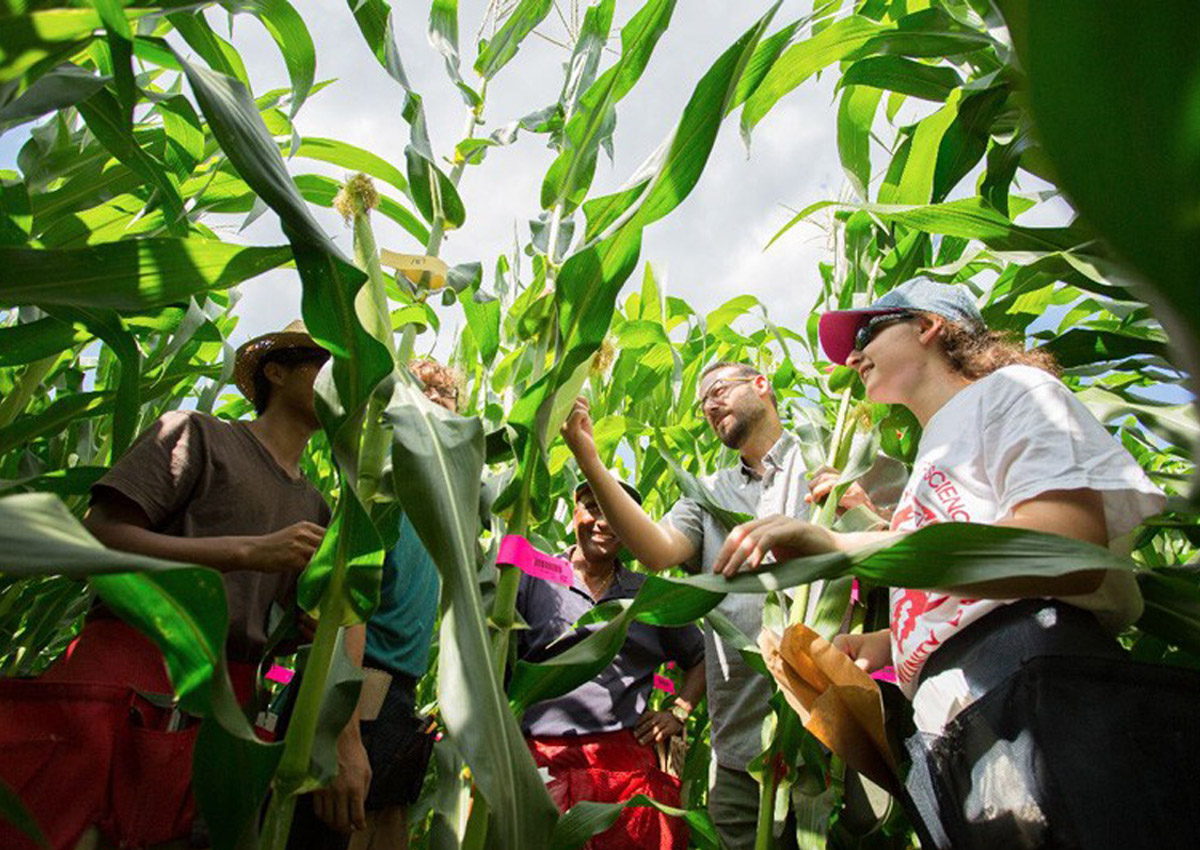
Researchers Turn to Exotics to Uncover How Corn Can Adapt Faster to New Climates
February 26, 2020| |
A multi-institutional team led by University of Delaware plant geneticist Randy Wisser decoded the genetic map for how maize from tropical environments can be adapted to the temperate U.S. summer growing season. Wisser sees these exotic varieties, which are rarely used in breeding, as key to creating next-era varieties of corn.
Modern maize varieties came from only a small fraction of the global maize population. This limited infusion of diversity raises concerns about the vulnerability of American corn in a shifting climate. The U.S. Department of Agriculture (USDA) seed bank includes tens of thousands of varieties, but many are just not being utilized. While some exotic maize strains are better at handling drought, waterlogging, or low-nitrogen soil, they evolved outside the U.S. and are not immediately suited to states such as Delaware. Thus, exotics first need to be pre-adapted.
To understand how corn survives and thrives, Wisser and colleague Jim Holland, a plant geneticist at the USDA Agricultural Research Service are analyzing how corn genomes behave in a target environment as they aim to formulate a predictive model for fitness. "What we're doing is sequencing the genomes and measuring traits like flowering time or disease for individuals in one generation," Wisser said. From this, they can generate a lookup table to foresee which individuals in the next generation have the best traits based on their genetic profiles. Wisser adds that their lookup table can be tailored to predict how the individuals will behave in a particular environment or location such as Delaware.
For more details, read the news release in UDaily.
| |
You might also like:
- Researchers Use Virus in Wheat and Maize Genome Editing
- CRISPR-Cas9 Helps Explain Maize Adaptation to Higher Latitudes
- Maize Genetics Helps Scientists Study Crop Adaptation to Climate Change
Biotech Updates is a weekly newsletter of ISAAA, a not-for-profit organization. It is distributed for free to over 22,000 subscribers worldwide to inform them about the key developments in biosciences, especially in biotechnology. Your support will help us in our mission to feed the world with knowledge. You can help by donating as little as $10.
-
See more articles:
-
News from Around the World
- FAO Director-General Emphasizes Biodiversity's Role to Food Systems
- Svalbard Global Seed Vault Receives Big Seed Deposit from 35 Genebanks
- Uganda's Ministry of Health Officials Urge Government to Pass Biosafety Law
- Researchers Turn to Exotics to Uncover How Corn Can Adapt Faster to New Climates
- Adapting Photosynthesis to Fleeting Shadows Boosts Soybean Yields
- USDA Targets to Halve US Environmental Footprint, Boost Production 40% by 2050
- Biologists Develop Defense to Fight Crop Infections
- Experts Suggest Consideration of Familiarity for ERA of GM Soybeans in Japan
-
Plant
- CRISPR Helps Determine Sorghum's Ability to Hide from Plant Pest
- Inheritance Patterns of Transgenes in a Series of CRISPR-Cas9 Soybean Lines
-
Read the latest: - Biotech Updates (December 10, 2025)
- Gene Editing Supplement (November 26, 2025)
- Gene Drive Supplement (February 22, 2023)
-
Subscribe to BU: - Share
- Tweet

